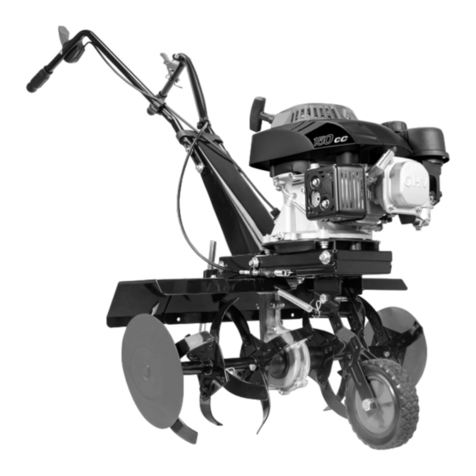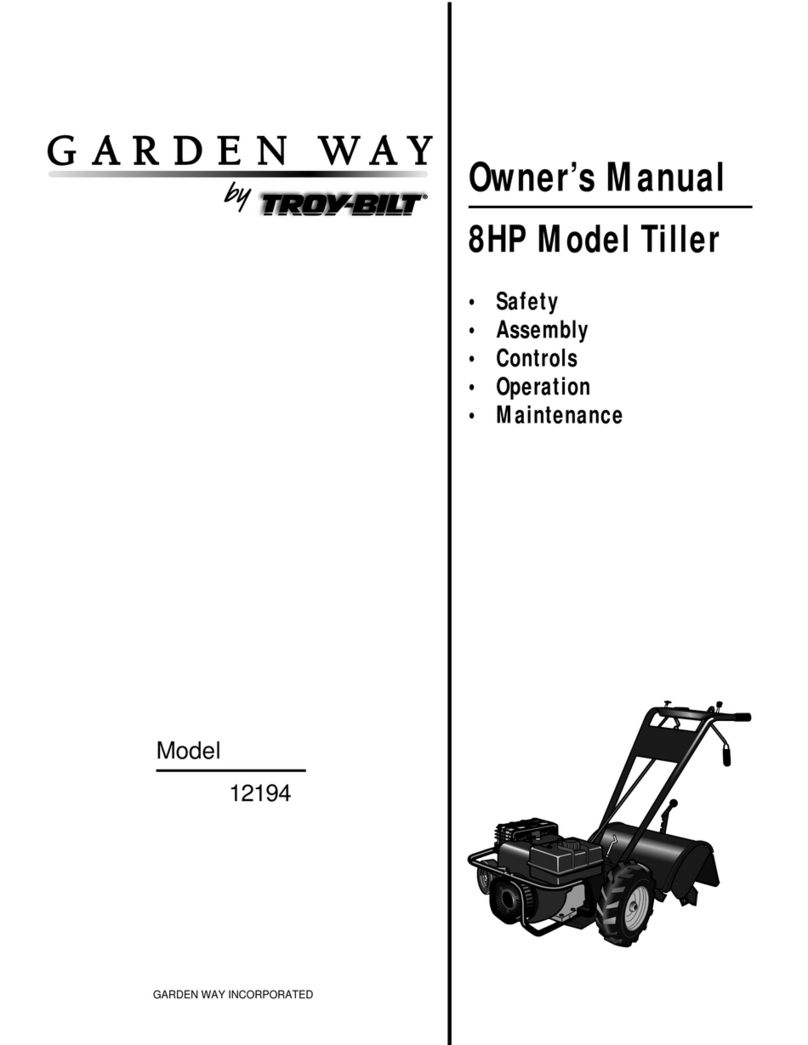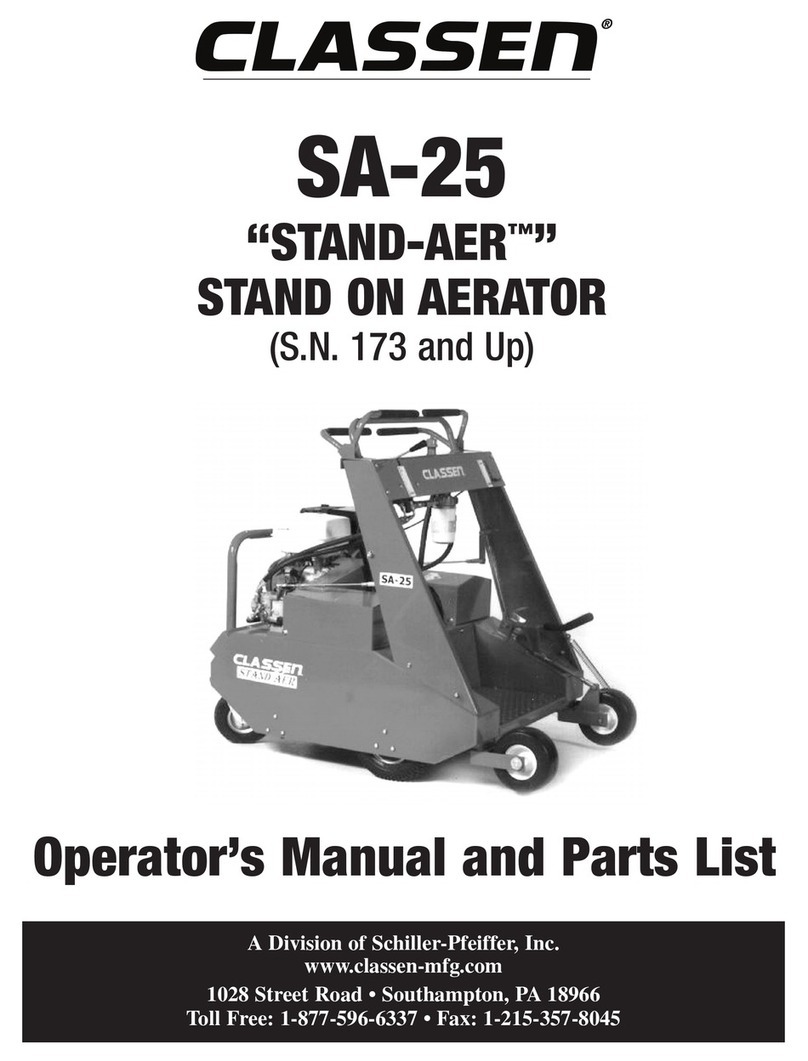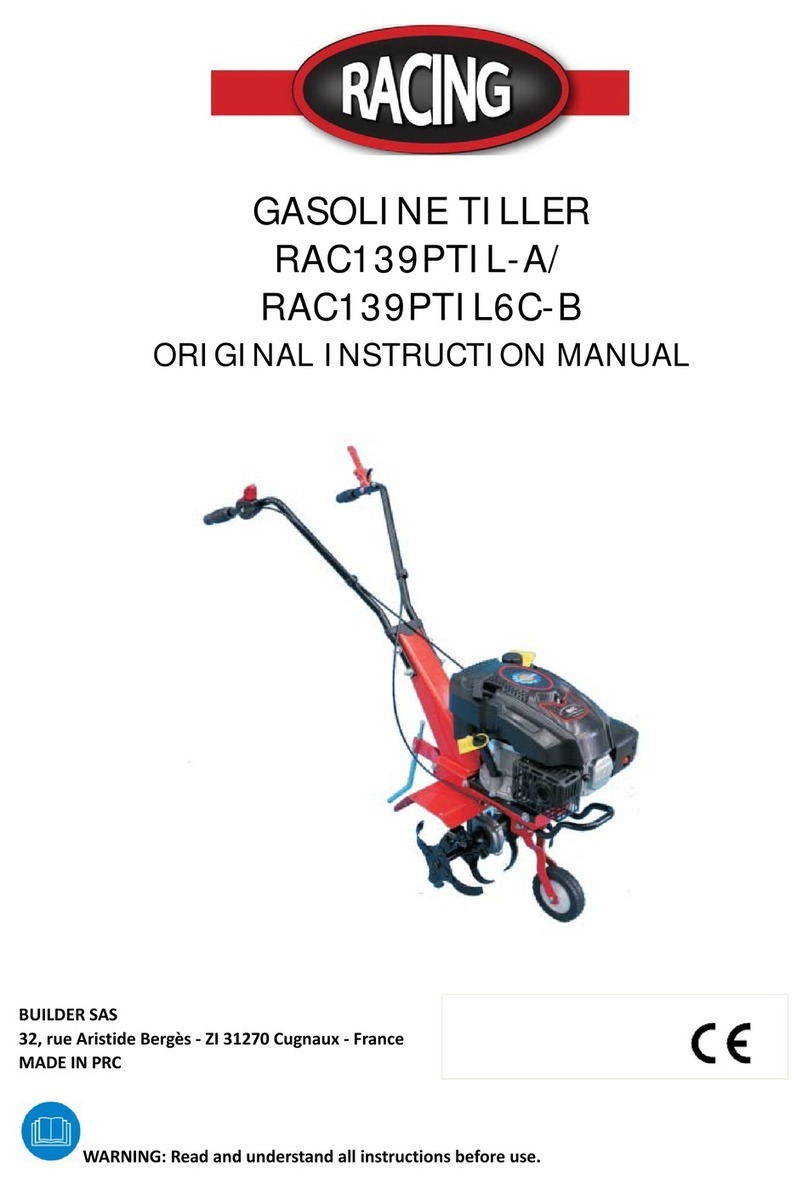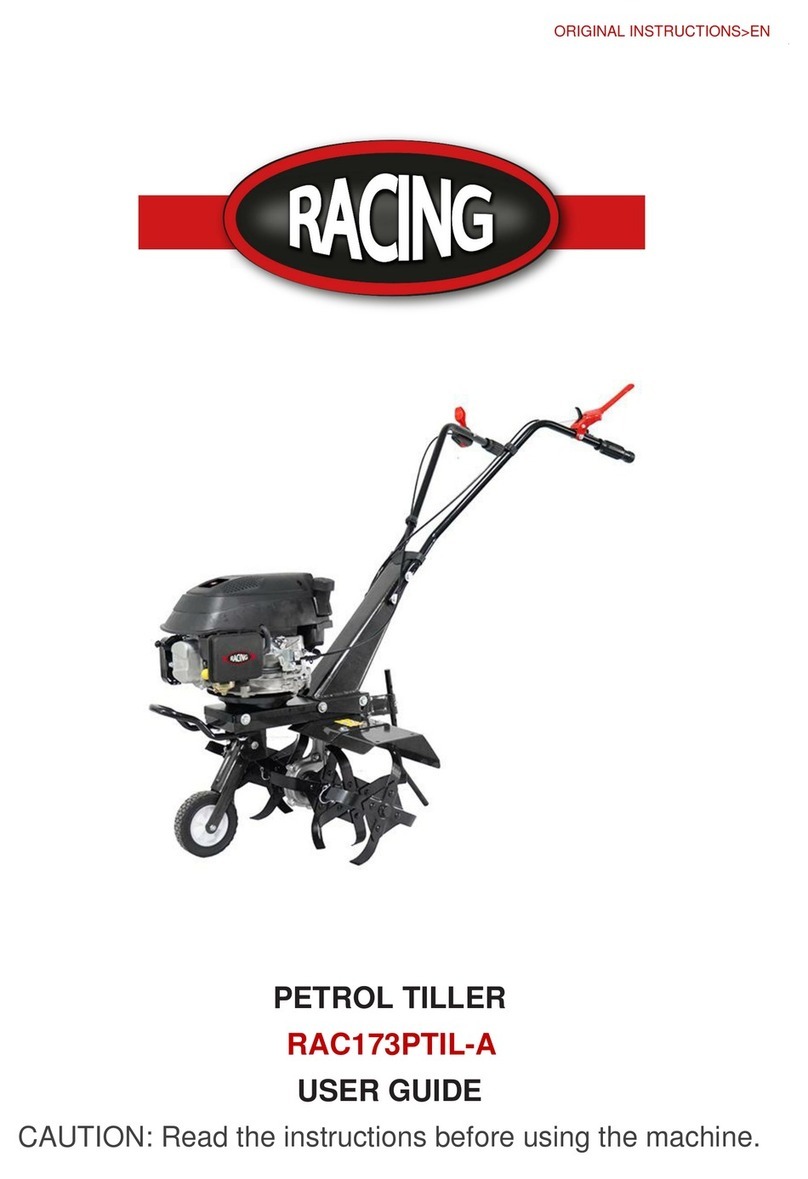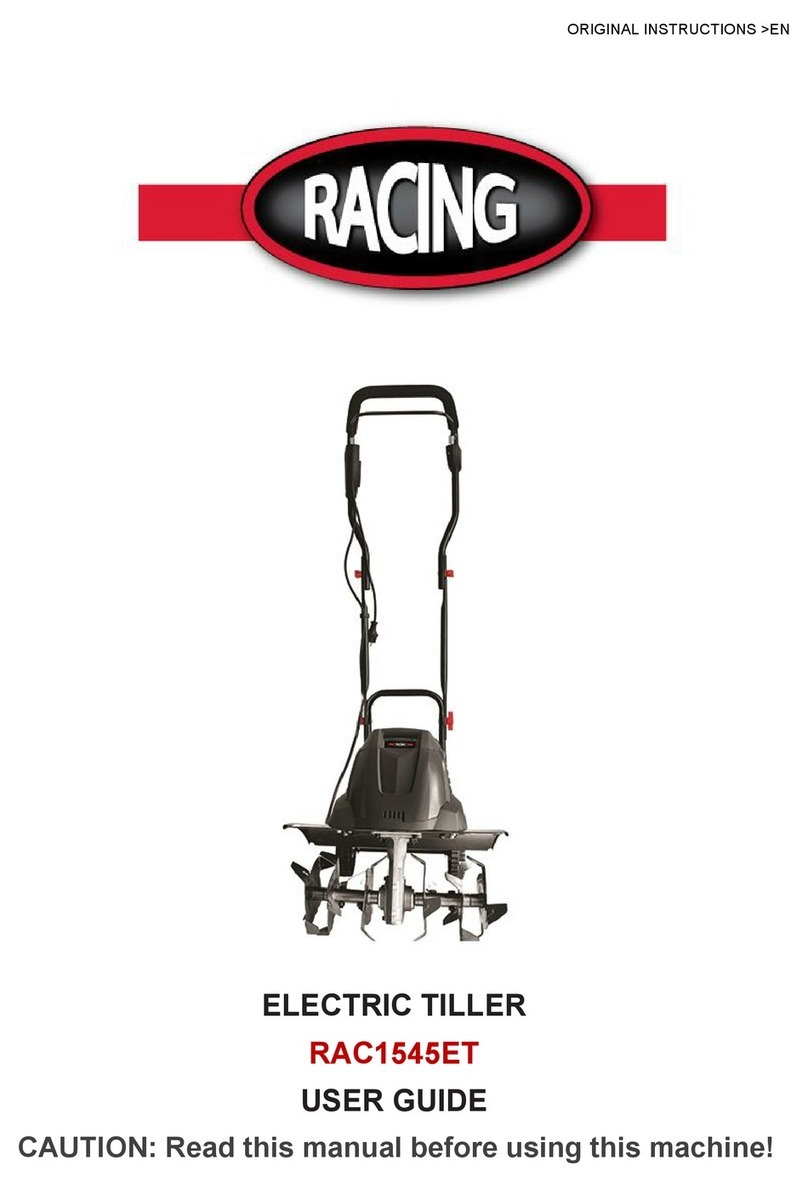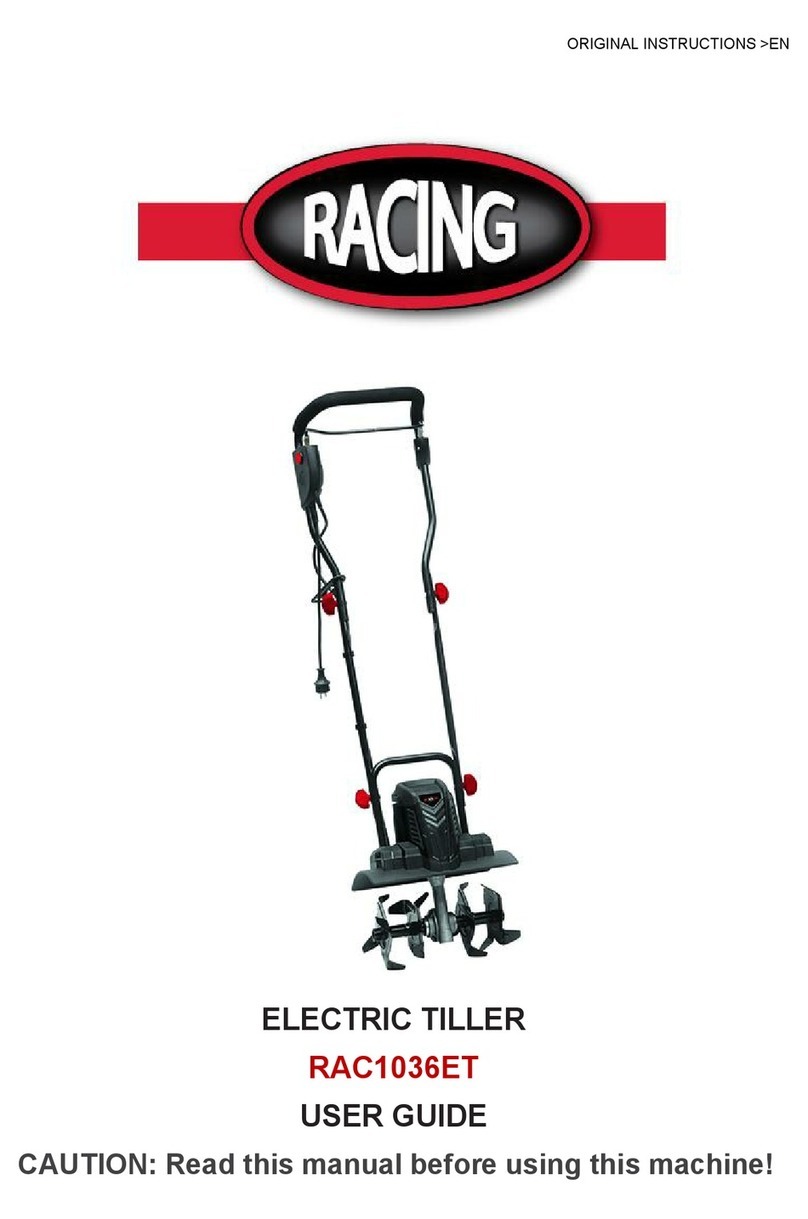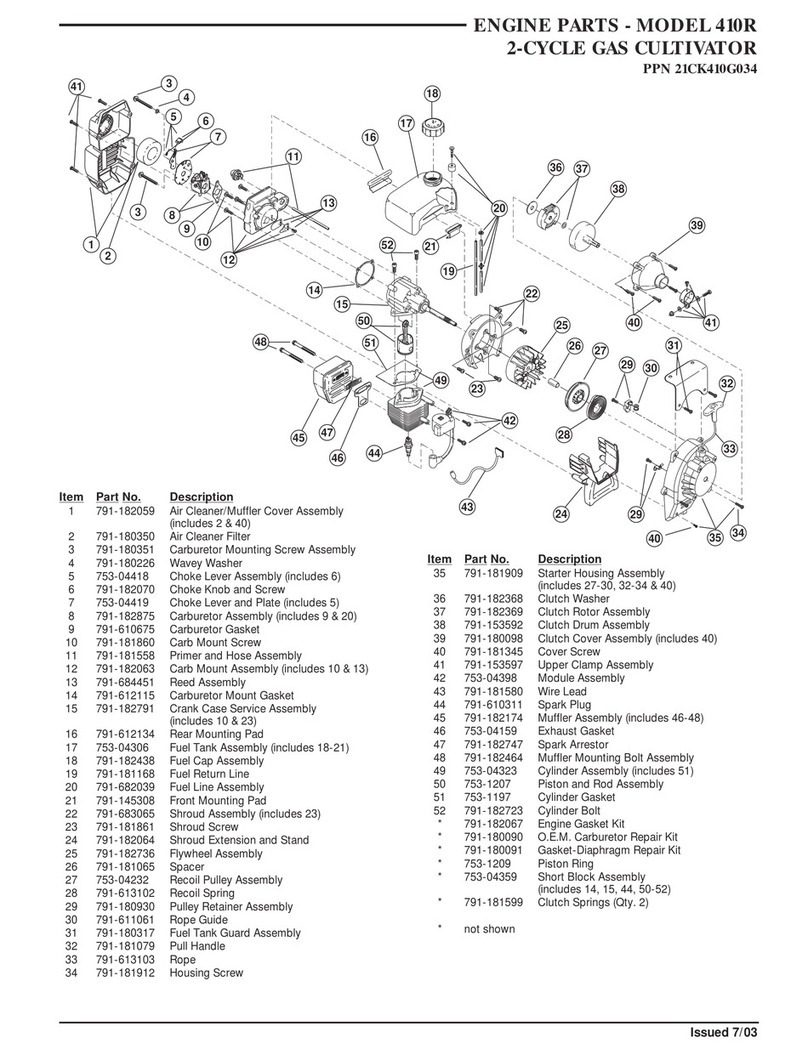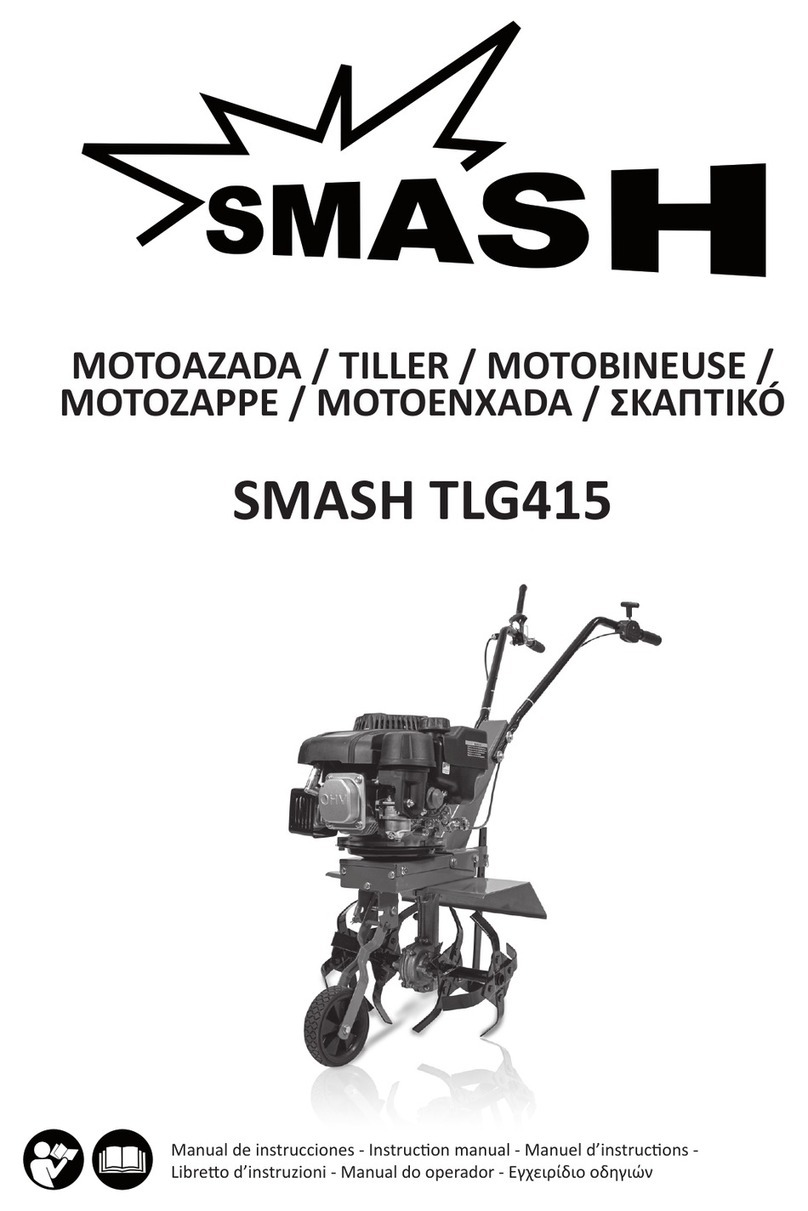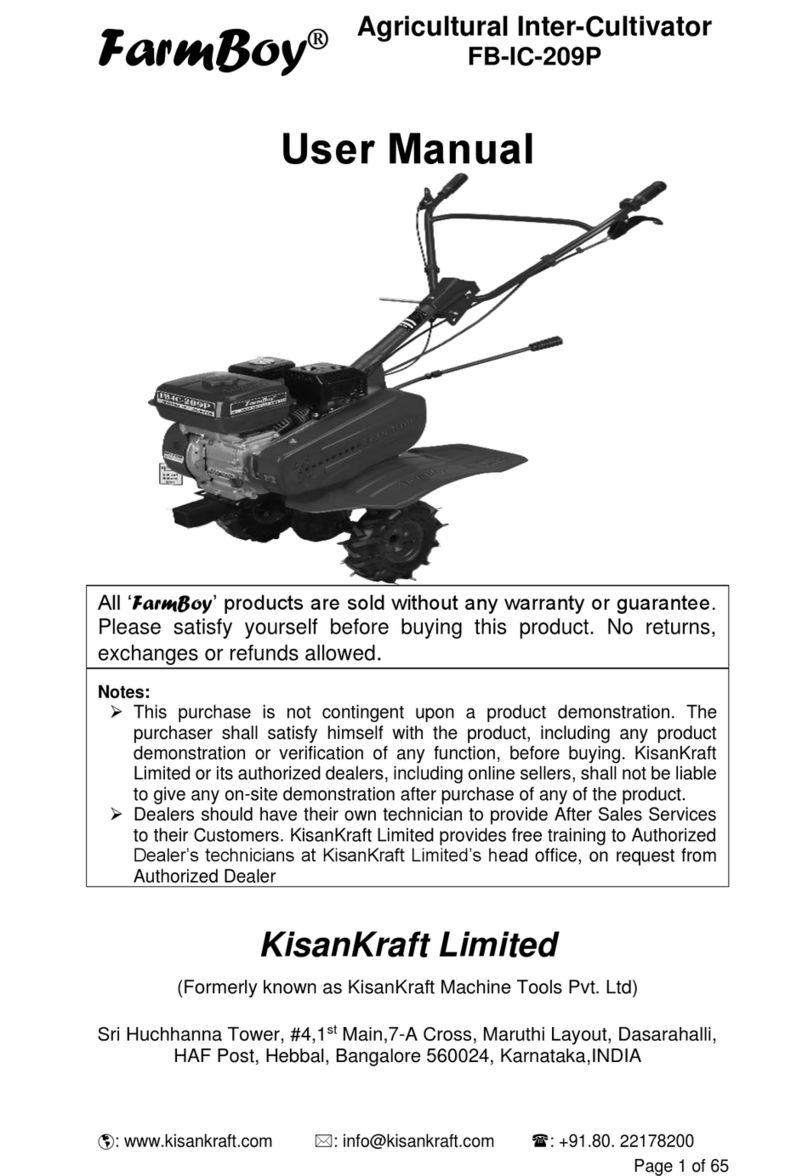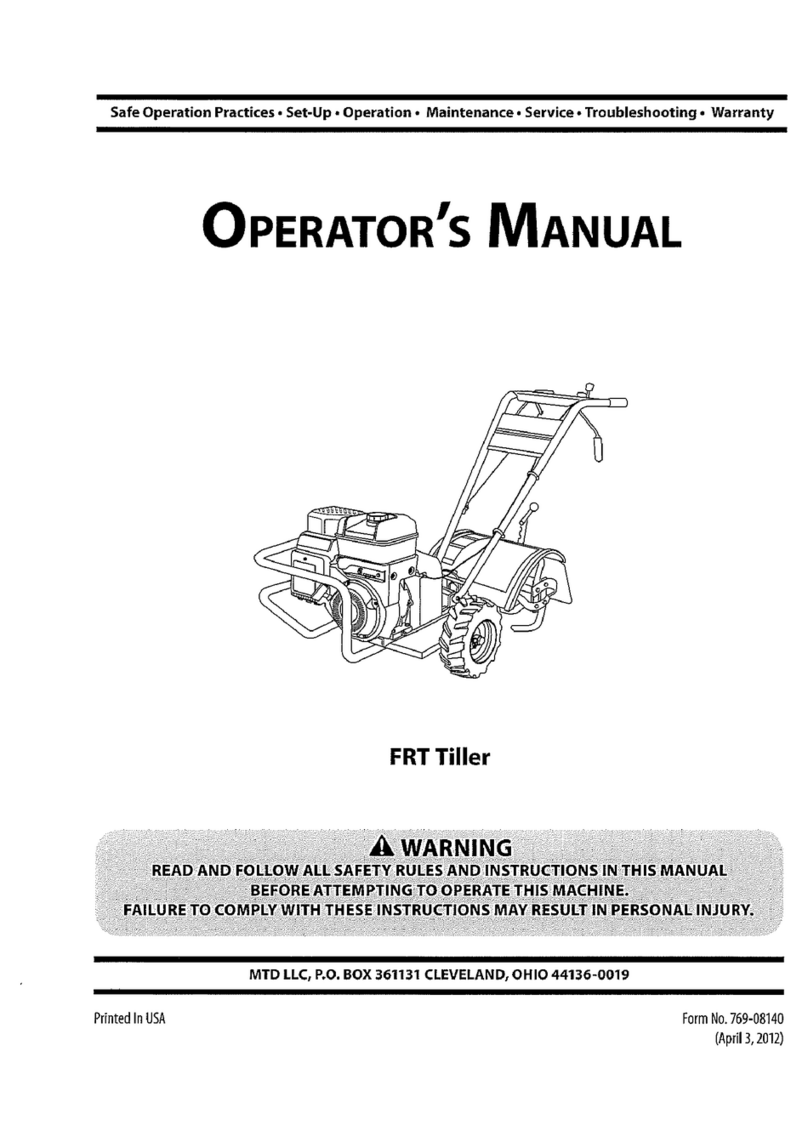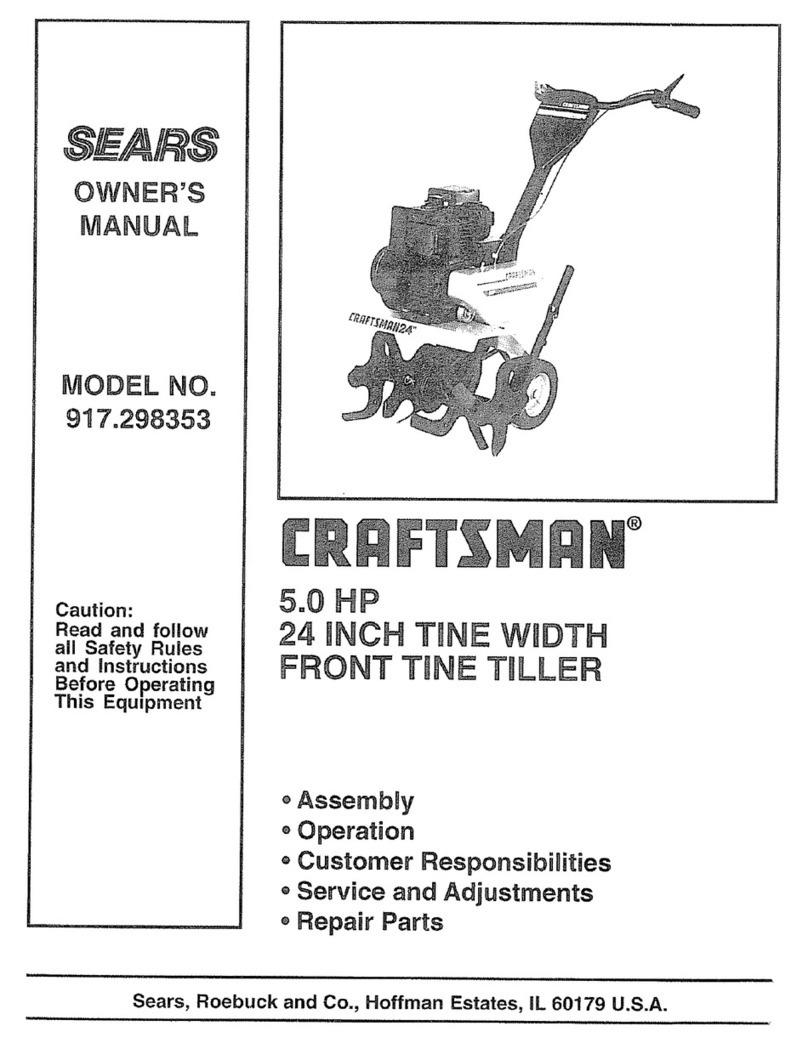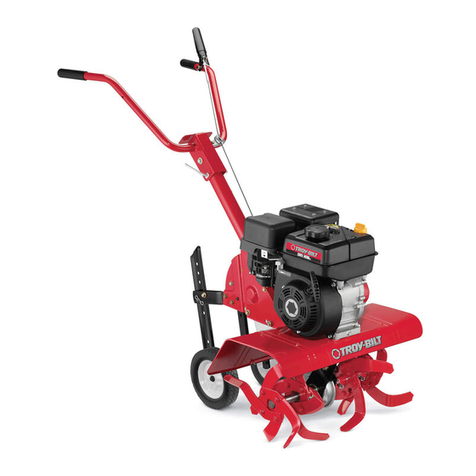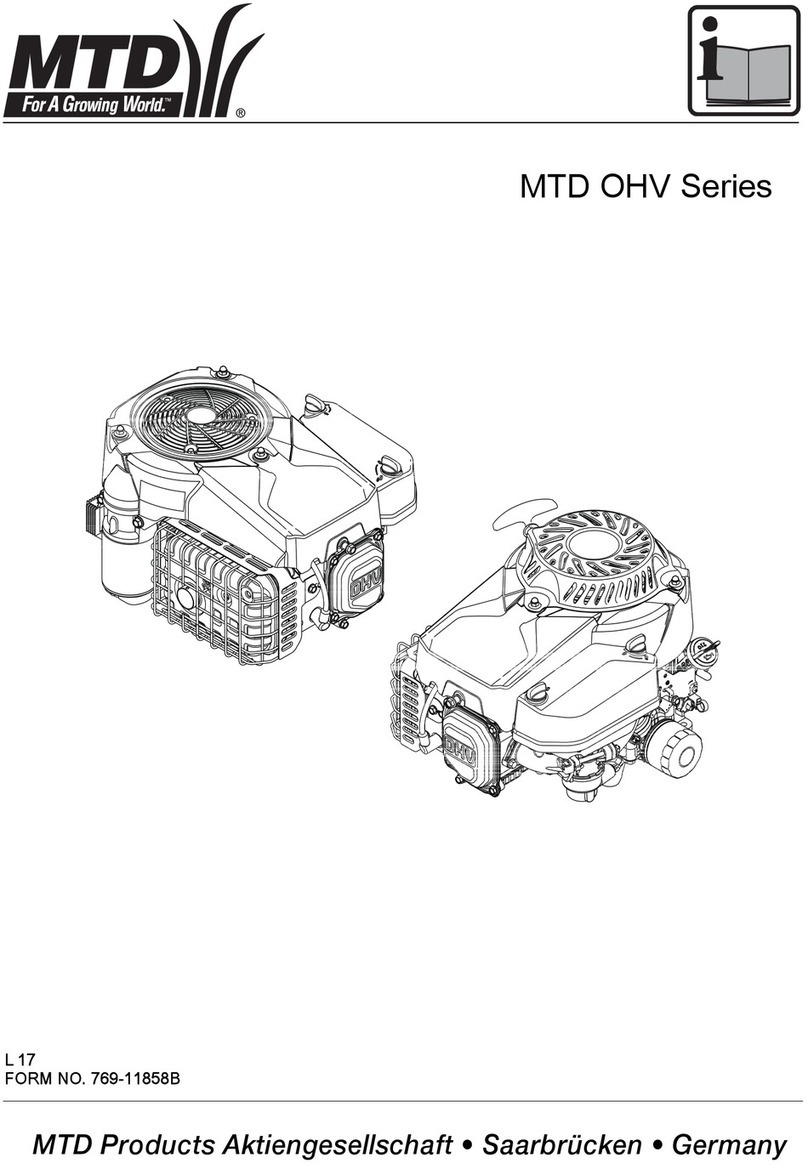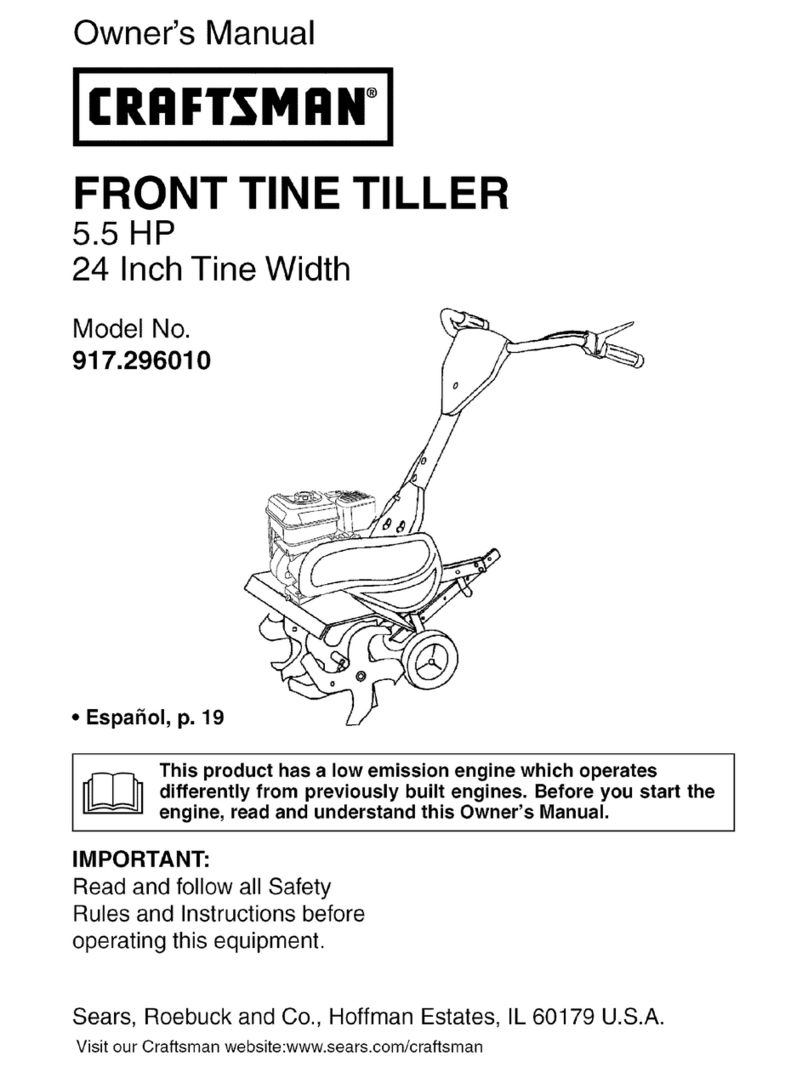- Always transport the machine by its handle, never by another part of the machine.
- Avoid using the device in bad weather conditions, especially when there is a risk of
thunderstorms and lightning.
- In the event of an accident, stop using the machine immediately. Turn off and check the problem.
Do not use the machine while the machine is damaged.
- Never allow people to approach the tool, especially during its operation.
- Do not use the tiller when you are tired, sick, or under the influence of alcohol, medicaments, or
drugs.
- Always wear appropriate clothing (do not wear short or loose clothing). Wear safety shoes (do
not wear sandals or work barefoot). Avoid putting jewelry and anything that gets stuck in the
machine.
- Keep people or animals away from the work area (with a minimum distance of 10 m).
- Remove all materials that could create accidents before the machine is used (pieces of wood,
stones, wire ropes, ropes, glasses, etc.).
- Check that all components are correctly attached.
- Do not use the cultivator on a ground incline more than 10 °.
- In an emergency, stop the machine.
- Never refuel or start the engine in a closed enclosure. The tiller must always be used outdoors.
- The machine must be stopped when carrying out maintenance and cleaning operations, when
changing tools or when transported by means other than under its own power.
- Be aware that the application may unexpectedly bounce upward or jump forward if the tines
should strike extremely hard, packed soil, frozen ground, or buried obstacles such as large
stones, roots, or stumps.
- The adjustable part of the protective device shall be adjusted to the working depth of the tool so
that only that part of the working tool that cuts into the soil remains uncovered.
- The machine should only be operated by suitably trained persons
RESIDUAL RISKS
- Even if you use this product in compliance with all safety requirements, the potential risks of
injury and damage remain. Always be vigilant when using this product, so that you can
recognize and manage the risks rather. The following hazards may arise in the structure and
design of this product:
- There are adverse health consequences resulting from the emission of vibration if the product is
used for long periods of time or not managed properly and properly maintained.
- There is a risk of injury and property damage due to attachments or broken the sudden impact
of hidden objects when using cutting.
- Risk of injury to persons and property caused by flying objects.
- Risk of hearing loss due to a long exposition to noise emitted by the machine.
Prolonged use of this product exposes the operator to vibration and can produce so-called "white
finger" disease. To reduce the risk, wear gloves and keep your hands warm.
If any of the symptoms of "white finger syndrome" occur, seek immediate medical attention.
Symptoms of the "white finger" include numbness, loss of sensitivity, tingling, and pain, loss of
strength, color changes or skin condition. These symptoms usually appear on the fingers, hands, or
wrists. Risk increases at low temperatures.
